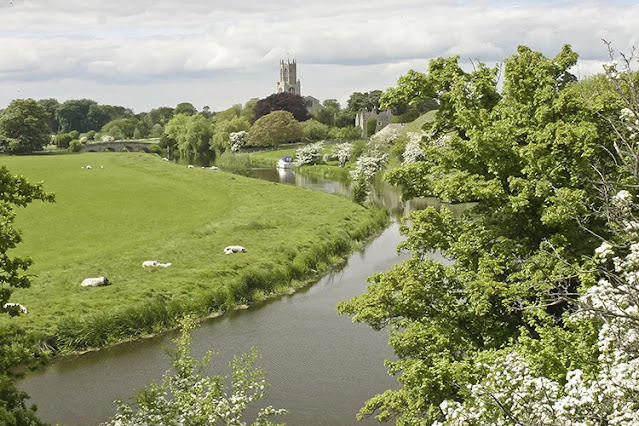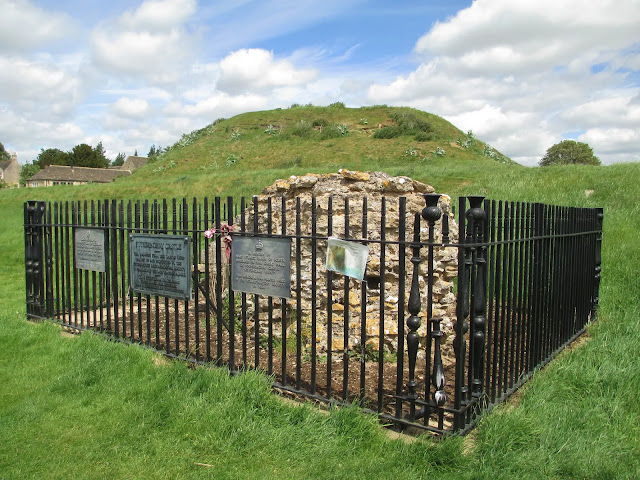Tuesday, February 28, 2023
Saint Auguste Chapdelaine
Saint Auguste Chapdelaine
Youngest of nine children born to Nicolas Chapdelaine and Madeleine Dodeman. Following grammar school, Auguste dropped out to work on the family farm. He early felt a call to the priesthood, but his family opposed it, needing his help on the farm. However, the sudden death of two of his brothers caused them to re-think forcing him to ignore his life’s vocation, and they finally approved. He entered the minor seminary at Mortain on 1 October 1834, studying with boys half his age. It led to his being nicknamed Papa Chapdelaine, which stuck with him the rest of his life.
Ordained on 10 June 1843 at age 29. Associate pastor from 1844 to 1851. He finally obtained permission from his bishop to enter the foreign missions, and was accepted by French Foreign Missions; he was two years past their age limit, but his zeal for the missions made them approve him anyway. He stayed long enough to say a final Mass, bury his sister, and say good-bye to his family, warning them that he would never see them again. Left Paris, France for the Chinese missions on 30 April 1852, landing in Singapore on 5 September 1852.
Due to being robbed on the road by bandits, Auguste lost everything he had, and had to fall back and regroup before making his way to his missionary assignment. He reached Kwang-si province in 1854, and was arrested in Su-Lik-Hien ten days later. He spent two to three weeks in prison, but was released, and ministered to the locals for two years, converting hundreds. Arrested on 26 February 1856 during a government crackdown, he was returned to Su-Lik-Hien and sentenced to death for his work. Tortured with and died with Saint Lawrence Pe-Man and Saint Agnes Tsau Kouy. One of the Martyrs of China
Born
6 January 1814 at La Rochelle-Normande, France
Died
beheaded on 29 February 1856 in Su-Lik-Hien, Kwang-Si province, China
Venerated
2 July 1899 by Pope Leo XIII (decree of martyrdom)
Beatified
27 May 1900 by Pope Leo XIII
Canonized
1 October 2000 by Pope John Paul II
Additional Information
The Holiness of the Church in the 19th Century
Monday, February 27, 2023
Fotheringhay Castle
 |
| It’s just to the west of Peterborough, about 85 miles north of London. |
Fotheringhay is a small village in Northamptonshire, close to Peterborough. The principal Ricardian sites are the castle, the church and the New Inn.
There is virtually nothing left of the castle since it was slighted and dismantled in the seventeenth century on the orders of King James I. The parish church has been altered over the years, and is shorter now than it was in the medieval period. However, it is still a wonderful place to visit.
The New Inn was the medieval hostel provided as an overspill for visitors to the castle. It is found at the bend in the road close to the bridge over the River Nene and though it is a private dwelling, it can be distinguished by a green plaque erected by the Society to commemorate the birth of Margaret of York, Duchess of Burgundy, in the nearby castle.
Richard III was born in the castle and legend has it that he was baptised in the church, though this event may have taken place in the castle chapel.
Little remains of the castle. There is still the mound where the keep, in the shape of a fetterlock, a Yorkist symbol, stood. Because it was here that Mary, Queen of Scots, was beheaded in February 1587, it has been suggested that her son, James VI slighted the castle when he became King of England and the building fell into disrepair. All that remains of the ancient stronghold today is a chunk of the outer stone wall, which is surrounded by a railing bearing two plaques with details about the royal connections.
Of the church, much more is left, though it is no longer as large as it would have been when Richard III was last known to have visited. In 1476, as Duke of Gloucester, he led the cortège that brought the bodies of his father, Richard, Duke of York, and elder brother, Edmund, Earl of Rutland, for reburial in the family mausoleum. At that time, the church extended further east and there was a college and cloister attached on the south, between it and the River Nene. The college was an institution for priests and choristers who daily prayed for the souls of the souls of the House of York, past and present.
 |
| Memorial to Edward of Norwich, 2nd Duke of York |
With the Dissolution, the property was sold and the roof of the choir and the cloister was stripped of its lead, allowing the rain to get in and resulting in rot and collapse. Eventually, only the nave and tower were left. As the nave was the parish church, the roof had been left alone. In 1566, when Elizabeth I saw what had happened to the tombs of her ancestors – her paternal grandmother was Elizabeth of York – she gave money for them to be reinterred in the sanctuary on either side of the altar, where they lie to this day.
The church is large, too large for the size of the present parish, and filled with light. The windows are huge and the medieval coloured glass almost completely gone. There is a modern window, the gift of the Richard III Society, which now provides a focal point for the ‘Chapel of All Souls and the memory of the royal House of York’, another gift of the Society. The window displays the heraldry of the first four Dukes of York, their wives and Richard III and his Queen, Anne Neville.
The pulpit was restored in 1966 and it now glows with colour. It was the gift of Edward IV and bears the Plantagenet royal arms, flanked by a white lion, a black bull and a white boar, symbols of the Yorkist sons. Hexagonal in shape, the pulpit stands in a narrow plinth.
The most recent addition to the furnishing of this wonderful old church is the pipe organ, built by Vincent Woodstock and installed in 2000.
Other gifts of the Society to the church include kneelers throughout the high fronted box pews and a cope for the incumbent. This is richly decorated with the heraldic history of the church. Financial support has also been given to the restoration of the bells, the building of the organ and the cleaning of the Decalogue behind the altar.
Skipton Castle in Yorkshire
Outfit from the 1920s
Elton John on a private Boeing
Sunday, February 26, 2023
Mt 4:1-11
At that time Jesus was led by the Spirit into the desert
to be tempted by the devil.
He fasted for forty days and forty nights,
and afterwards he was hungry.
The tempter approached and said to him,
"If you are the Son of God,
command that these stones become loaves of bread."
He said in reply,
"It is written:
One does not live on bread alone,
but on every word that comes forth
from the mouth of God."
Then the devil took him to the holy city,
and made him stand on the parapet of the temple,
and said to him, "If you are the Son of God, throw yourself down.
For it is written:
He will command his angels concerning you
and with their hands they will support you,
lest you dash your foot against a stone."
Jesus answered him,
"Again it is written,
You shall not put the Lord, your God, to the test."
Then the devil took him up to a very high mountain,
and showed him all the kingdoms of the world in their magnificence,
and he said to him, "All these I shall give to you,
if you will prostrate yourself and worship me."
At this, Jesus said to him,
"Get away, Satan!
It is written:
The Lord, your God, shall you worship
and him alone shall you serve."
Then the devil left him and, behold,
angels came and ministered to him.
Gn 2:7-9; 3:1-7
The LORD God formed man out of the clay of the ground
and blew into his nostrils the breath of life,
and so man became a living being.
Then the LORD God planted a garden in Eden, in the east,
and placed there the man whom he had formed.
Out of the ground the LORD God made various trees grow
that were delightful to look at and good for food,
with the tree of life in the middle of the garden
and the tree of the knowledge of good and evil.
Now the serpent was the most cunning of all the animals
that the LORD God had made.
The serpent asked the woman,
"Did God really tell you not to eat
from any of the trees in the garden?"
The woman answered the serpent:
"We may eat of the fruit of the trees in the garden;
it is only about the fruit of the tree
in the middle of the garden that God said,
'You shall not eat it or even touch it, lest you die.'"
But the serpent said to the woman:
"You certainly will not die!
No, God knows well that the moment you eat of it
your eyes will be opened and you will be like gods
who know what is good and what is evil."
The woman saw that the tree was good for food,
pleasing to the eyes, and desirable for gaining wisdom.
So she took some of its fruit and ate it;
and she also gave some to her husband, who was with her,
and he ate it.
Then the eyes of both of them were opened,
and they realized that they were naked;
so they sewed fig leaves together
and made loincloths for themselves. Gn 2:7-9; 3:1-7
Our Lady of the Fields, Paris, France
February 26: Our Lady of the Fields, Paris, France, consecrated by Saint Denis (250)
The title of Our Lady of the Fields, or Notre-Dame des Champs, and the devotion to Mary as such, takes us back to the earliest days of Catholic life in France.
Our Lady des Champs, at Paris, was dedicated in ancient times to Ceres. Saint Denis, to whom we owe a great deal of our traditional devotion to Mary, was the first Bishop of Paris. According to tradition he drove the demons from the Temple of Ceres, the pagan goddess of agriculture, and placed therein an image of the Madonna modeled after Saint Luke’s famous painting. The Temple was henceforth dedicated to the Blessed Virgin, whom Parisians have honored for centuries under the title of Our Lady of the Fields. It is said that a picture of the Blessed Virgin is still to be seen there, on a small stone, a foot square, which was made after that which Saint Denis brought to France.
This house, which is a Benedictine priory, was afterwards occupied by the Carmelites, who were received there in the year 604, and founded by Catherine, Princess of Longueville. It was the first occupied by those nuns in France; the mother Ann of Jesus, the companion of Saint Teresa, was its first superior.
If the Blessed Virgin were a goddess she would be a very human goddess – simple and approachable, forgetful of her privileges and of her beauty. Her constant humility adds to her charm. Saint Denis knew this well. He found her so gloriously beautiful that he gave to her the place in the temple – and in the hearts of the people – formerly held by the pagan goddess.
“I am the Flower of the Fields,” the Holy Ghost has the Blessed Virgin say. A flower of the fields has a simple beauty that charms us even more because it blossoms by itself without care or cultivation. Our Savior Himself marveled at such a flower and of it He spoke these words of praise that have been repeated through the centuries: “See how the lilies of the field grow; they neither toil nor spin, yet I say to you that not even Solomon in all his glory was arrayed like one of these.”
But lilies soon fade and roses are hardly open before they begin to shed their petals before the wind. The beauty of Mary is less perishable; it remains ever fresh and unchanged in the valley of our exile.
*from The Woman in Orbit and other sources
Friday, February 24, 2023
Saint Adela of Blois
Saint Adela of Blois Princess. Youngest daughter of King William the Conqueror of England. Married Stephen of Blois, France in 1080. Mother of eleven children. Active in English politics throughout her life. Endowed several churches and monasteries.
Thursday, February 23, 2023
Wednesday, February 22, 2023
Scotney Castle aerial view
Scotney Castle is an English country house with formal gardens south-east of Lamberhurst in the valley of the River Bewl in Kent, England. It belongs to the National Trust.
Ash Wednesday
Ash Wednesday
Liturgical Color: Violet
Remember that you are dust, and to dust you shall return. ~Distribution of ashes
It was a common practice within the early Church that those who were found guilty of grave public sin needed to do public penance before they were admitted back into communion with the Church and admitted to the Most Holy Eucharist. The public sinners came forward in sackcloth forty days before Easter and were sprinkled with ashes, in keeping with many Old Testament examples of public penance. They fasted and prayed for forty days and then, on Easter, were readmitted into full communion with the Church. Eventually, prior to the end of the first millennium, this practice was extended to the entire Church as a way of highlighting everyone’s need for penance. One of the earliest mentions of this practice becoming universal comes from an English Benedictine monk who wrote:
We read in the books both in the Old Law and in the New that the men who repented of their sins bestrewed themselves with ashes and clothed their bodies with sackcloth. Now let us do this little at the beginning of our Lent that we strew ashes upon our heads to signify that we ought to repent of our sins during the Lenten fast.
Today, as a sign of our ongoing need to repent of our sins and do penance, the faithful are invited to come forward to be marked with ashes as a sign of their commitment to the penitential season of Lent, so as to celebrate with great joy the Solemnity of Easter. Lent is forty-six days long. Forty of those days are penitential days, and six of them are Sundays. Lent begins on Ash Wednesday and concludes with the Easter Vigil. The forty penitential days are an imitation of Jesus’ forty days in the desert.
As we come forward to receive ashes, the minister traditionally says, “Remember that you are dust, and to dust you shall return.” This line is taken from the Book of Genesis when God expelled Adam and Eve from the Garden of Eden. He told Eve that she would suffer the pains of childbirth and be subjected to her husband. God told Adam that he would labor for his food through sweat and toil. To both of them, God said this curse would last “Until you return to the ground, from which you were taken; For you are dust, and to dust you shall return” (Genesis 3:19). Thus, the final curse of original sin is death: “…to dust you shall return.”
As we come forward to receive ashes, we should hear God saying to us, as He said to Adam and Eve, that we also suffer the consequences of original sin and will die. But that curse must be seen in the light of God’s final plan of salvation. Today, we acknowledge that the curse of death will endure but also hold onto the hope of resurrection made possible through Christ. Lent is a time of repentance for our sin and hope in redemption. Ash Wednesday is our liturgical and public statement that we have chosen both repentance and redemption.
As you come forward to receive the ashes today, don’t just go through the motions. Make this act a prayer and one of deep interior devotion. Call to mind your sins and the sins of your whole life, as best you can. Acknowledge the just punishment of eternal death that you deserve for your sins. But then call to mind the infinite and unmerited mercy of God. Remember that even though you are an undeserving sinner, God has reached down from Heaven to offer you the gift of eternal salvation. He has invited you to receive this gift through your repentance and humility. Humble yourself today in “sackcloth and ashes,” and as with those public sinners of old, God will use this Lent to more fully unite your soul with His through His glorious death and resurrection.
Tuesday, February 21, 2023
Monday, February 20, 2023
Imari China
Imari ware is a Western term for a brightly-coloured style of Arita ware Japanese export porcelain made in the area of Arita, in the former Hizen Province, northwestern Kyūshū. They were exported to Europe in large quantities, especially between the second half of the 17th century and the first half of the 18th century.
Friday, February 17, 2023
Wednesday, February 15, 2023
Tuesday, February 14, 2023
Monday, February 13, 2023
Wednesday, February 8, 2023
Monday, February 6, 2023
Donkey
Saturday, February 4, 2023
Cheers

-
Schloss Friedrichshof in Kronberg im Taunus, Hesse, near Frankfurt am Main, was built between 1889 and 1893 for the dowager German Empr...





















.png)





















.jpg)






